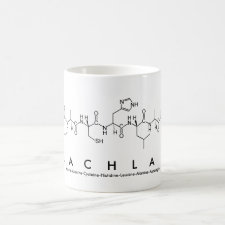
Authors: Boysen RI, Li SY, Chowdhury J, Schwarz LJ, Hearn MTW
Article Title: Selectivity optimisation of biomimetic molecularly imprinted polymer thin films.
Publication date: 2012
Journal: Microelectronic Engineering
Volume: 97
Page numbers: 81-84.
DOI: 10.1016/j.mee.2012.03.026
Alternative URL: http://www.sciencedirect.com/science/article/pii/S0167931712001256
Abstract: This study describes the design and synthesis of molecularly imprinted polymers (MIPs) as patterned thin films, based on molecular modelling of functional monomer-template interactions and validation by NMR-spectroscopy. MIPs were prepared by dissolving the specific template and functional methacrylate monomer at varying ratios with a cross-linker and initiator in a porogenic solvent, spin-coating the solution onto 3-(trimethoxysilyl)propyl methacrylate-functionalised silicon wafers and photo-polymerisation. After template extraction, the film thickness and topography were characterised with atomic force microscopy. A 4-vinylpyridine-MIP thin film layer was then deposited by photo-lithographic etching onto this polymerised methacrylic acid MIP thin film, resulting in a grid-patterned surface in which two different MIPs alternated at a micron scale. Selectivity differences towards fluorescent template analogues were documented using fluorescence microscopy. This side-by-side comparison on the same thin film allows fast and cost-effective assessment of MIP selectivities with various biomolecules
Template and target information: N-boc-L-phenylalanine
Author keywords: Molecularly imprinted polymers, Molecular self-assembly, molecular modelling, Spin-coating, Photolithography, atomic force microscopy, Nano-structured biomimetic thin film



Join the Society for Molecular Imprinting

New items RSS feed
Sign-up for e-mail updates:
Choose between receiving an occasional newsletter or more frequent e-mail alerts.
Click here to go to the sign-up page.
Is your name elemental or peptidic? Enter your name and find out by clicking either of the buttons below!
Other products you may like:
 MIPdatabase
MIPdatabase









